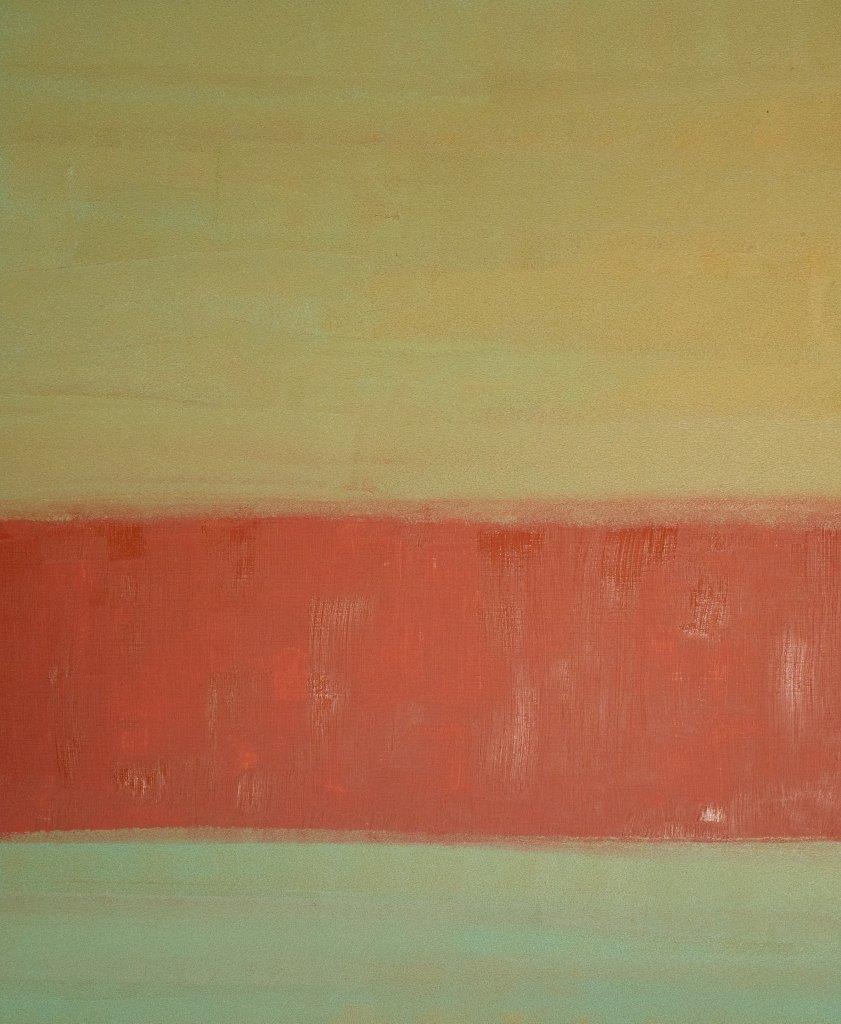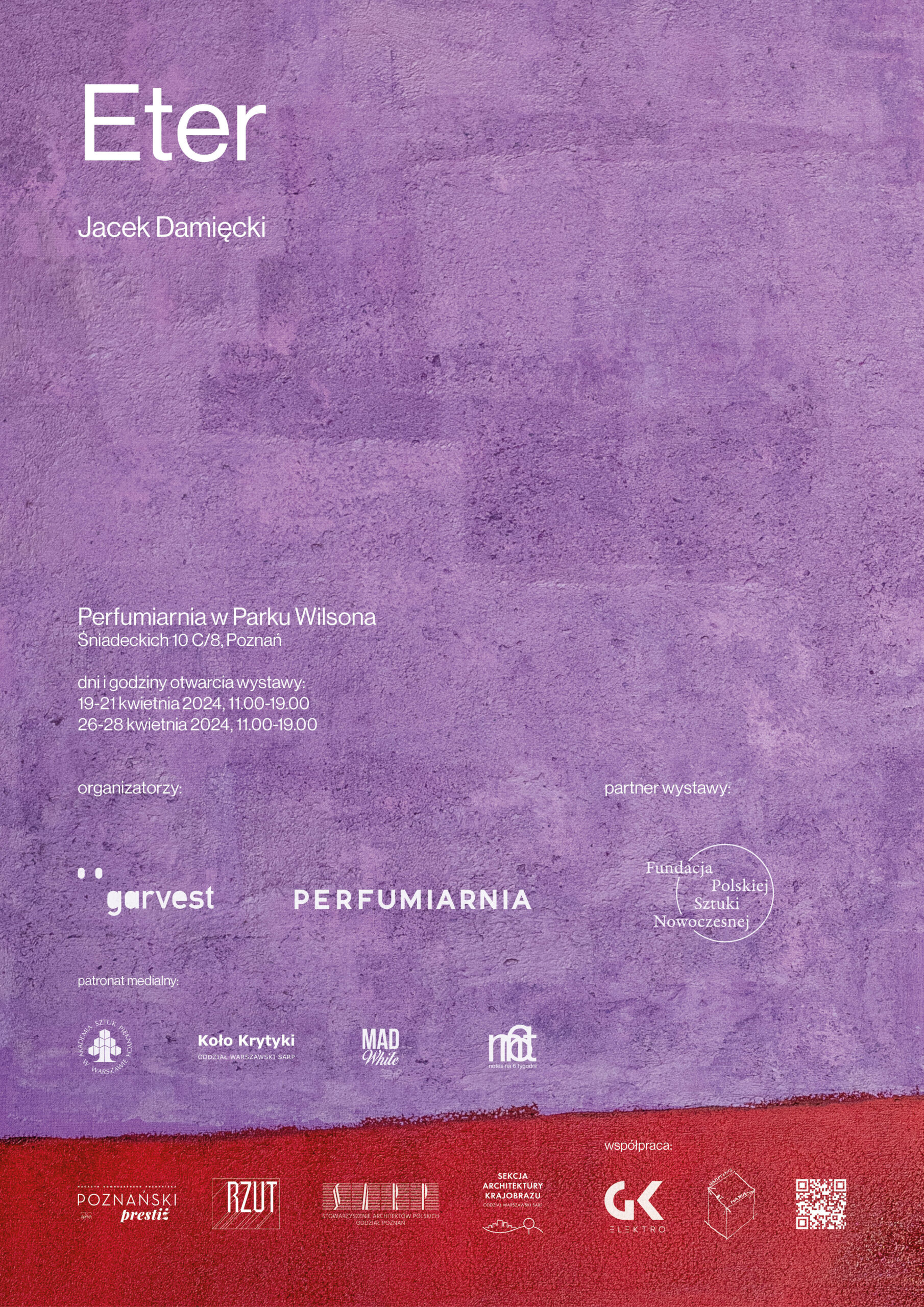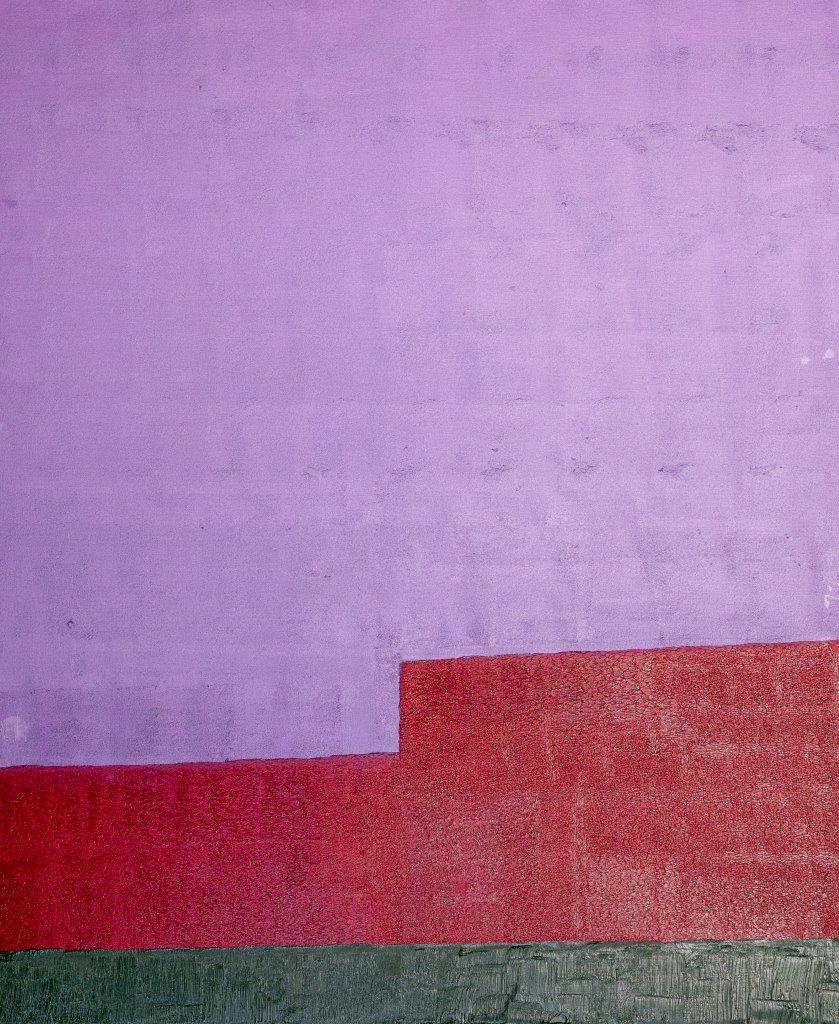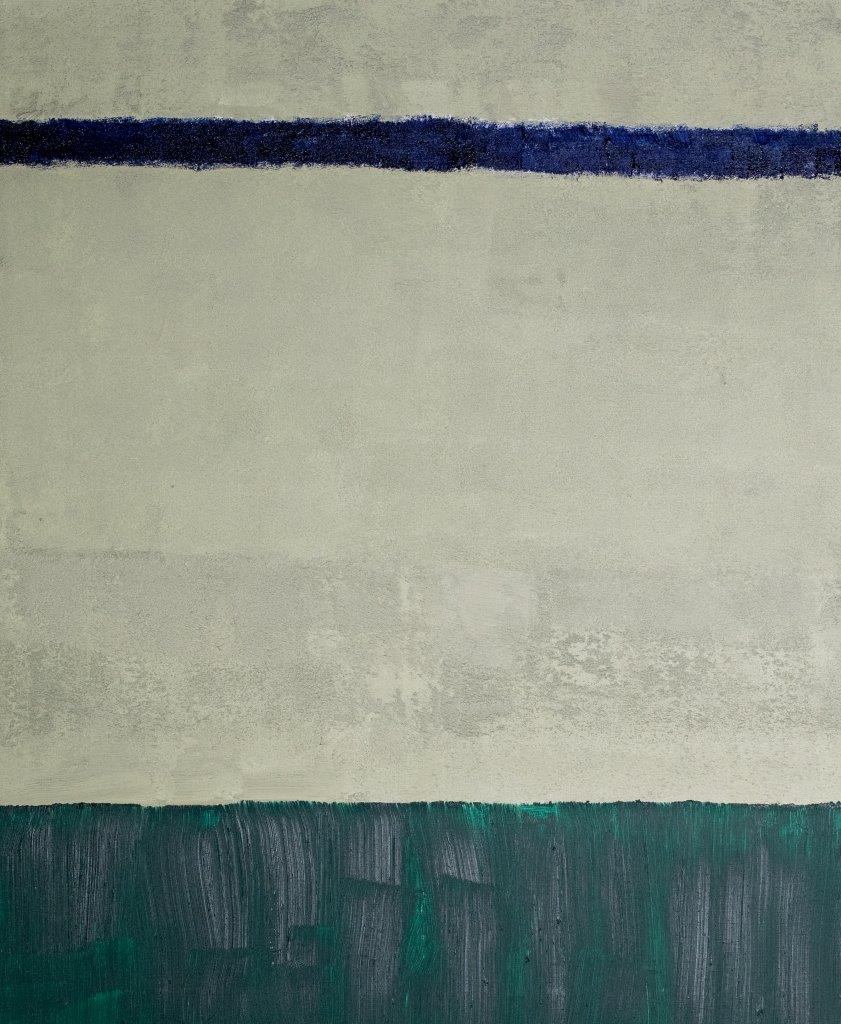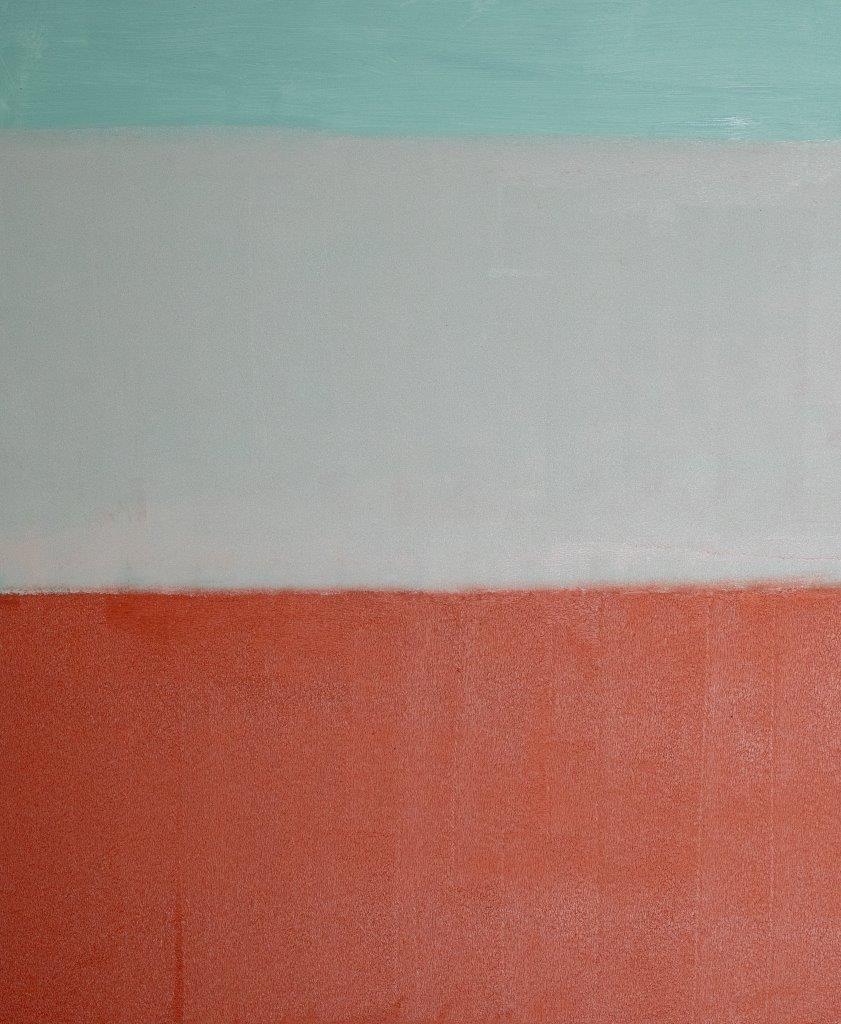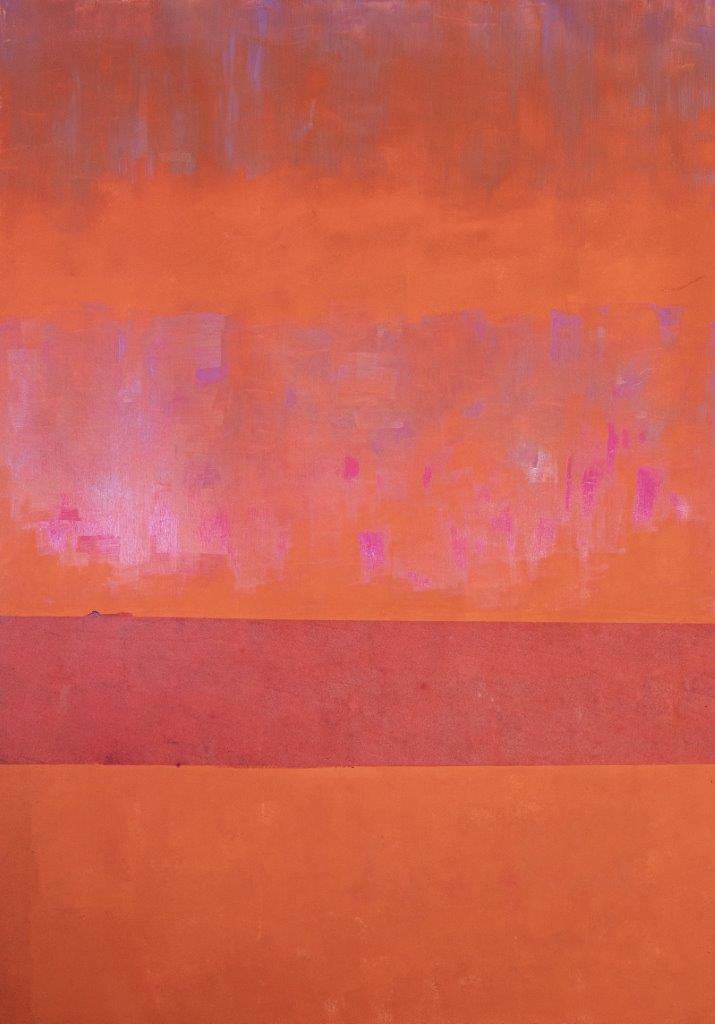Prominent personality of Polish architecture, Jacek Damięcki opens an exhibition in Poznań. The ETER exhibition will take place in the Perfumiarnia, whose architecture Jacek Damięcki became enthralled with a year ago.
Painting is one of the forms of expression of the work of Jacek Damięcki, who can be called an architectural visionary. In his research, he deals with the experience of space. In the exhibition “Ether”, he shows the perspective of its perception. From his almost smooth paintings beams the energy of a man who has broken free from his illness.
Excerpt from a critique by Prof. Dr. Maria Poprzęcka in the exhibition catalogue:
Lookingup at the sky, JacekDamięckiwants toreach with his eyes the ether – atermtaken from the Greek to mean theupper, pure air, thehigher heavenlyregions.Consideredby Aristotle to be the fifth element.Gazing at dawns and sunsets, at the first light of dawn and thefadingred streaks at theendof theday, the painterpierces with his eyes the supra-terrestrial spaces in order toreach the purest depths. And in his paintingshe shares thisexperience with us.
The exhibition is curated by the artist’s son, Jan Damięcki, an architect at JEMS Architekci, who co-designed the Perfumery. The paintings will be shown in its rooms.
Jacek Damięcki, ‘Ether’ 19-28 April 2024
Perfumiarnia, 10C/8 Śniadeckich St
Curator: Jan Damięcki
Deadline:
19-21 April 2024, 11:00-19:00
26-28 April 2024, 11am-7pm
The exhibition’s partner is the Foundation for Polish Modern Art, and the patrons are: Academy of Fine Arts in Warsaw; Koło Krytyki, SARP Warsaw Branch; WhiteMAD; Notes Na 6 Tygodni; Poznań prestige; Rzut; SARP Poznań Branch; Section of Landscape Architecture, SARP Warsaw Branch.
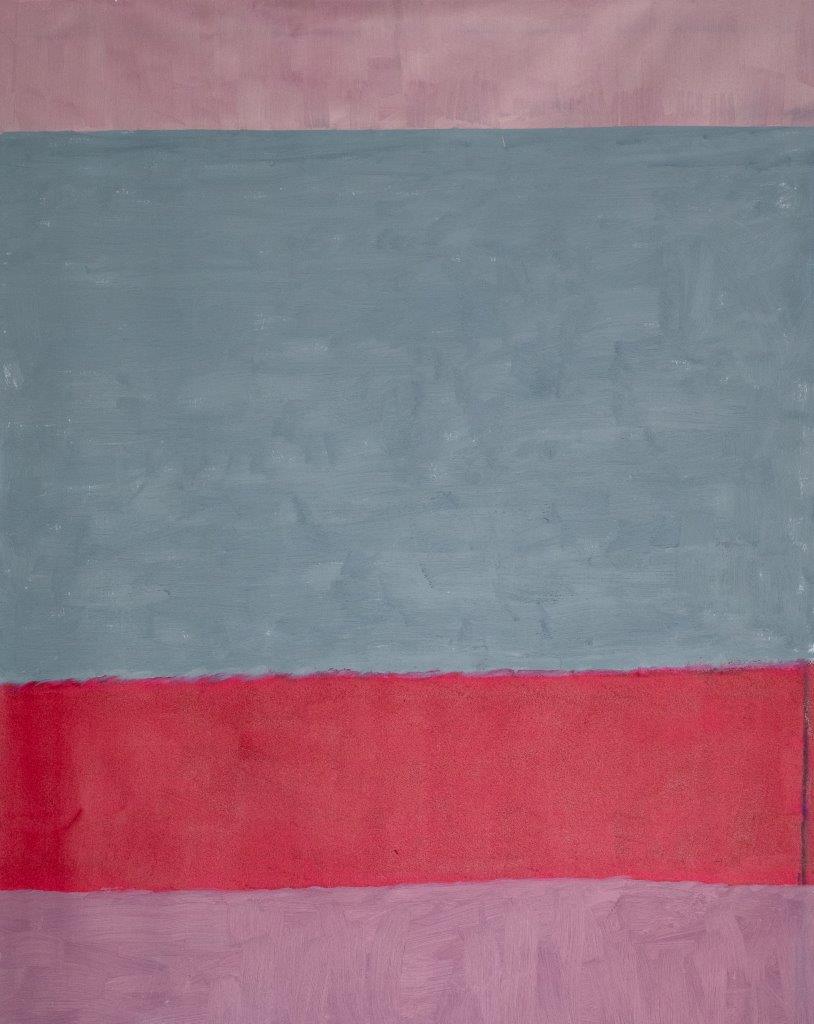
_
Maria Poprzęcka on Jacek Damięcki’s paintings:
We are looking at an exhibition of paintings whose author is an architect. We know architects who paint, but they usually remained in the world of close motifs – views of cities, buildings, monuments, utopian projects and fantasies. Here, on the other hand, we are confronted with pure painting – large abstract canvases pulsating with colour. But the exhibition is also a meeting with one of the extraordinary, and all too little known, creators of Polish art and architecture of the last half-century. Jacek Damięcki is a completely unique figure, whose entire life has been uncompromisingly focused on thinking about architecture “as an experience of space” rather than on designing and realising specific architectural projects. Throughout his life, the artist remained an independent, separate figure, not connected to any architectural studio, always remaining outside the mainstream of architectural activity.
Jacek Damięcki (b. 1935) was remembered – or rather discovered – at the exhibition ‘Macroforms’ at Warsaw’s Zachęta Gallery (2016/17). The following year, his project was presented at the ‘Amplifications of Nature’ exhibition in the Polish Pavilion at the Venice Architecture Biennale. Best known to a wider audience is the unforgettable macro-installation ‘Cloud’, which Damięcki realised at Piłsudski Square in Warsaw in 1994. A huge dark sheet, supported by a well-thought-out structure, fluttered like a giant sail. There was something both menacing and exhilarating in this powerful flapping. With this monumental, though ephemeral work, unlike any monument, the artist was to bid farewell to the subject of the Warsaw Uprising, which had been present in conversations in his family home for years.
Painting is not a relaxing hobby for Damięcki, the architect, but one of the means of expression he sometimes reaches for. The absolute independence that characterises him has meant that he has never felt constrained by one medium or confined to one type of creation. The paintings presented at the exhibition were created very recently, from a single throw, as if by a sudden impulse.
The artist had returned to activity after a bad time of illness and weakness. He painted intensely in his own designed studio – an ascetic solitude, beautifully situated on the edge of the Vistula meadows. In the high, airy interior, the paintings were also secluded, free from the company or competition of the picturesque clutter inherent in an artistic atelier. Their fields of colour made themselves at ease in the empty space.
With this burst of new creative energy, Jacek Damięcki joined the – not so numerous – group of artists from different eras whose work of late not only continues, but changes, as if gaining new strength. Their life goes on as if against nature, against the obvious biological order. And their creativity, instead of dying out with age, is reignited again and again. Late old age turns out to be their fertile years. It is not often, but sometimes, that artists in their late teens bear witness to a “passionate and superior imagination”, as the poet William Butler Yeats wrote about the “existential paradox”, complaining about old age as if it were a weight on a dog’s tail. It was as if, having reached old age, these extraordinary artists rejected its supposed balance and tranquillity, wanting to follow “the riverbed backwards”.
Not to reverse its course, but to resist, not to give in to the current. This is not resignation, on the contrary, a challenge to the natural course of things. Although it is well known what a risk this challenge is. In the struggle “against nature”, the latter usually wins, reminding us of the inevitability of the decline and end of life. The idea of a creative apogee reached in old age precisely through the abandonment of supposed ‘balance and tranquillity’ is not new. “For artists of the highest rank, old age is sometimes a period when the purest and most momentous works are produced, and this, it seems, precisely because of the natural frailties of old age: when the formative power, the charm of sensual shaping, the unforced submissiveness to the given world weaken, only the main lines of creativity, that which is deepest and most personal in it, remain” – wrote the cultural theorist Georg Simmel long ago. Kenneth Clark, the long-time director of London’s National Gallery, also left an emotional apologia for late art: “nothing more mysterious than the power of an old artist giving life to a stain or a scratch”, “paint is no longer a material substance but something precious, ephemeral, alive”, “only an old artist would be able to encapsulate the experience of a whole life in a few colourful touches …”.
Jacek Damięcki continues to think about “experiencing space” when painting his new pictures. He thinks, looks and feels. He sees the airy expanse from a different, horizontal position. He sees the bluish-pink, pale dawn, obscured by the projection of a wall, from his hospital bed. “When one lies on one’s back and looks straight ahead, the sky turns out to be something so far different that one is shocked”, wrote Virginia Woolf about the change in perspective of a sick person. A perspective that changes the perception and experience of the world. Thinking about space acquires a different dimension. Looking up at the sky, Jacek Damięcki wants to reach with his eyes the ether – a term taken from the Greek to mean the upper, pure air, the higher regions of the heavens. According to Aristotle, it was considered the fifth element. Gazing at dawns and sunsets, at the first light of dawn and the fading red streaks at the end of the day, the painter pierces with his eyes the supra-terrestrial spaces in order to reach the purest depths. And in his paintings he shares this experience with us.
source: Salon Akademii Gallery, Academy of Fine Arts in Warsaw
Read also: Art | Poznan | Art | Curiosities | Events | whiteMAD on Instagram

